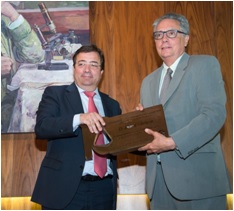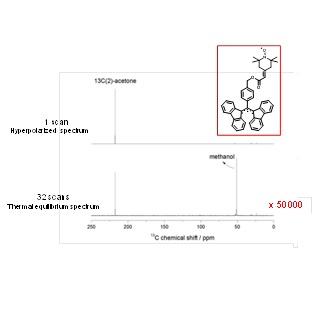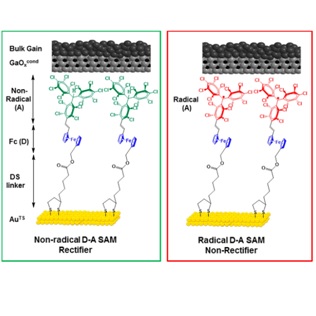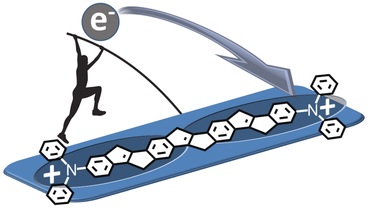The group NANOMOL has authored 26% of the scientific articles of ICMAB in the prestigious Nature index list
The Nature Index takes into account the published scientific articles from 1st February 2016 to 31th January 2017. This index is elaborated annually based on the affiliations of the authors of scientific articles published in a selection of 68 high-quality journals (http://www.natureindex.com/faq#journals).
CSIC appears as the first Spanish research centre in this ranking and occupies position number 38 in the global ranking of 500 research centres worldwide while ICMAB occupies the first position within the CSIC centres taking into account the corrected index WFC that shares the work between the different co-authoring institutions and corrects for the overrepresentation of some fields. Thus, ICMAB appears in the Nature index with a total of 42 articles out of which 12 have been authored by researchers of NANOMOL showing a significant contribution (26% of the publications contained in this list) to the leadership of ICMAB in excellence in Science.

Prof. Jaume Veciana received a Mention of Honor from the President of Extremadura during the celebration of the X Anniversary of the Center for Minimally Invasive Surgery
26th April 2017
El Prof. Jaume Veciana recibió el pasado día 22 de Abril una Mención de Honor a manos del actual Presidente de la Junta de Extremadura, D. Guillermo Fernández Vara, durante el acto de celebración del X Aniversario del Centro de Cirugía Mínima Invasión Jesús Usón por su compromiso, esfuerzo y dedicación en la creación de la Infraestructura Científico-Técnica Singular (ICTS) NANBIOSIS, en colaboración con el Centro de Investigación Biomédica en Red de Bioingeniería, Biomateriales y Nanomedicina (CIBER-BBN).
On April 22, Prof. Jaume Veciana received a Mention of Honor from the current President of Extremadura, Guillermo Fernández Vara, during the celebration of the X Anniversary of the Center for Minimally Invasive Surgery “Jesus Usón” for his commitment, effort and dedication in the creation of the Singular Scientific Technological Infrastructures (ICTS) NANBIOSIS, in collaboration with the Center for Biomedical Research Center in Bioingeneering, Biomaterials and Nanomedicine (CIBER-BBN).

NMR signal enhancement > 50000 times in Fast Dissolution Dynamic Nuclear Polarization.
Chem. Commun., 2017, 53, 3757-3760
L. F. Pinto, I. Marín-Montesinos, V. Lloveras, J. L. Muñoz-Gómez, M. Pons, J. Veciana and J. Vidal-Gancedo
This article reports the synthesis and the study as polarizing agent for fast dissolution DNP of a novel mixed biradical with a BDPA and TEMPO radical units covalently bound by an ester group (BDPAesterTEMPO). Such a biradical exhibits an extremely high DNP NMR enhancement > 50000 which constitutes one of the largest signal enhancement observed so far, to the best of our knowledge.
http://pubs.rsc.org/en/content/articlelanding/2017/cc/c7cc00635g#!divAbstract

Tuning the Rectification Ratio by Changing the Electronic Nature (Open-Shell and Closed-Shell) in Donor−Acceptor Self-Assembled Monolayers
Manuel Souto, Li Yuan, Dayana C. Morales, Li Jiang, Imma Ratera, Christian A. Nijhuis, and Jaume Veciana.
J. Am. Chem. Soc. 2017, 139, 4262−4265.
DOI: 10.1021/jacs.6b12601
Abstract: This Communication describes the mechanism of charge transport across self-assembled monolayers (SAMs) of two donor−acceptor systems consisting of a polychlorotriphenylmethyl (PTM) electron-acceptor moiety linked to an electron-donor ferrocene (Fc) unit supported by ultraflat template-stripped Au and contacted by a eutectic alloy of gallium and indium top contacts. The electronic and supramolecular structures of these SAMs were well characterized. The PTM unit can be switched between the nonradical and radical forms, which influences the rectification behavior of the junction. Junctions with nonradical units rectify currents via the highest occupied molecular orbital (HOMO) with a rectification ratio R = 99, but junctions with radical units have a new accessible state, a single-unoccupied molecular orbital (SUMO), which turns rectification off and drops R to 6.
http://pubs.acs.org/doi/abs/10.1021/jacs.6b12601

Bis(aminoaryl) Carbon-Bridged Oligo(phenylenevinylene)s Expand the Limits of Electronic Couplings
P. Mayorga Burrezo, N-T. Koji, K. Nakabayashi, S. Ohkoshi, E.M. Calzado, P.G. Boj, M. Díaz García, C. Franco, C. Rovira, J. Veciana, M. Moos, C. Lambert, J.T. López Navarrete, H. Tsuji, E. Nakamura, J. Casado.
Angew. Chem. Int. Ed. 2017, 56, 2898 –2902
Carbon-bridged bis(aminoaryl) oligo(para-phenylenevinylene)s have been prepared and their optical, electrochemical, and structural properties analyzed. Their radical cations are class III and class II mixed-valence systems, depending on the molecular size, and they show electronic couplings which are among the largest for the self- exchange reaction of purely organic molecules. In their dication states, the antiferromagnetic coupling is progressively tuned with size from quinoidal closed-shell to open-shell biradicals. The data prove that the electronic coupling in the radical cations and the singlet–triplet gap in the dications show similar small attenuation factors, thus allowing charge/spin transfer over rather large distances.
Read full article here: http://onlinelibrary.wiley.com/doi/10.1002/ange.201610921/abstract








 News
News